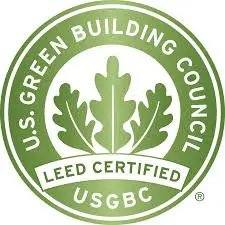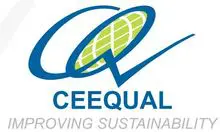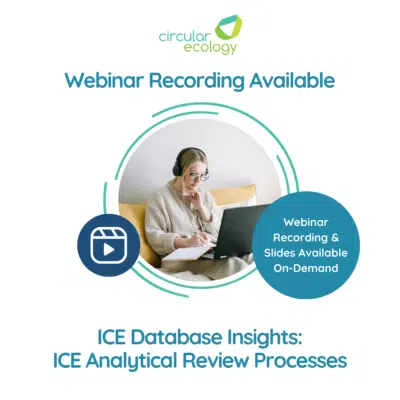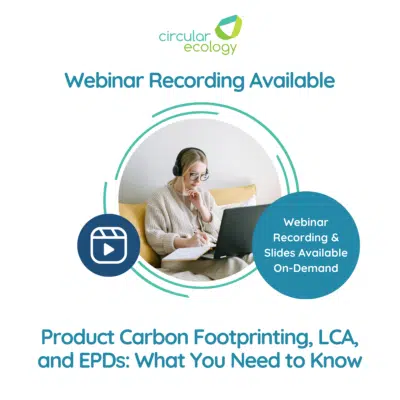Green Building LCA Credits in BREEAM, LEED, CEEQUAL

We are regularly asked if life cycle assessment (LCA, also known as life cycle analysis) or embodied carbon assessments can be used to score points in green building and construction rating systems such as BREEAM, LEED and CEEQUAL. The short answer is yes!
Now let’s look at the detailed answer…
What is Life Cycle Assessment and Embodied Carbon Assessment?
There is a difference between whole life carbon assessment and life cycle assessment, as below:
- Whole life carbon assessment: This type of assessment looks only at the environmental impact of carbon over the life cycle. This includes the embodied energy and embodied carbon to construct a building and the operational energy and carbon to operate a building. It also includes the end of life disposal of a building. It is often measured over a defined period, such as 60 years.
- Life cycle assessment: Whole life carbon assessment is sometimes accidently called LCA, when in fact they are different fields. An LCA is far more than just embodied and operational carbon, it can study over 20 different environmental indicators at once. Issues such as toxicity, ozone, water depletion (water footprint), eutrophication, particular matter formation, acidification, hazardous waste, material depletion, metal depletion….and more. A carbon only study should not be called an LCA, it is instead a whole life carbon assessment.
Naturally, a full LCA is more work than a carbon only assessment. It’s therefore wise to check which type of assessment is required before starting an environmental assessment.
A full LCA requires the use of LCA software and tools whereas a carbon only assessment can often be done in excel.
Green Building Credits in BREEAM with Life Cycle Assessment (LCA) & Embodied Carbon Assessment

6 BREEAM points can be obtained by assessing the material environmental impacts. This is done with the BREEAM Mat 01 calculator and by reporting the life cycle greenhouse gas emissions (kgCO2e) for each element are also required to be reported based on a 60-year building lifetime. The study may be supported by generic data (non-manufacturer specific) and with independently verified Environmental Product Declarations (EPDs).
The approach takes a building element approach where the elements that need to be assessed are defined by building type, i.e. offices, retail, industrial…etc. The full list of building elements:
- External walls
- Windows
- Roof
- Upper floor slab
- Internal Walls
- Floor finishes / floor covering
For all of the defined elements the lifecycle embodied carbon needs to be reported over a 60 year lifetime. There are up to 6 credits available here.
A further 3 innovation credits may be achieved with exemplary level criteria. For these 3 BREEAM credits to be obtained a full life cycle assessment (LCA) needs to be completed using an IMPACT compliant LCA tool.
IMPACT (www.impactwba.com) is an LCA specification and LCA database for buildings, rather than a dedicated software package. At present the LCA tools available that the BRE label as compliant (or developing compliance) with IMPACT are:
These tools will help to achieve the BREEAM innovation credits through life cycle assessment.
So in total up to 9 credits can be achieved (6 BREEAM credits + 3 Innovation BREEAM credits).
Green Building Credits in LEED Certification with Life Cycle Assessment & Embodied Carbon

The credits can be obtained for new buildings (or portions of buildings) by completing a life cycle assessment of the project’s structure and enclosure and by achieving at least a 10% environmental impact reduction over a baseline building.
The green building LCA credits are far more than just embodied carbon, although embodied carbon is a mandatory environmental impact category. The assessor chooses at least three of six environmental impact categories to assess. The 6 categories are:
- Global warming potential (greenhouse gases), in CO2e
- Depletion of the stratospheric ozone layer, in kg CFC-11
- Acidification of land and water sources, in moles H+ or kg SO2
- Eutrophication, in kg nitrogen or kg phosphate
- Formation of tropospheric ozone, in kg NOx, kg O3 eq, or kg ethene
- Depletion of non-renewable energy resources, in MJ
As part of the assessment to achieve LEED certification and the LCA credits no impact category chosen as part of the life cycle assessment can increase by more than 5% compared with the baseline building.
Data must be compliant with the international standards on LCA, ISO 14044:2006 to achieve the extra credits for LEED certification.
Green Building Credits in CEEQUAL with Life Cycle Assessment & Embodied Carbon

The sub-section 8.2 is on Embodied Impacts. In this section it defines many sub-areas where the LCA can achieve points. However, in general there are points available for both embodied carbon assessments and for full LCAs. You can achieve in CEEQUAL:
- Embodied carbon footprint assessment = 11 points
- LCA, but only for key construction materials = 28 points
- Full LCA covering all life cycle stages = 56 points
There are a further 56 points available for projects that have reduced the LCA environmental impacts.
The CEEQUAL section 8.3 Design for Resource Efficiency, includes further points that the LCA can help to achieve.
Reducing the Environmental Impact of a Building or Construction
In our experience it is often possible to reduce the environmental impact of a building by 10-20% without adding to the build cost (CAPEX). This is achieved by focussing on the quick wins, assessing key design options and using prior-experience.
A 10% environmental impact reduction over a baseline is required for the credits in LEED and would also cover the current environmental impact reduction requirements in BREEAM.
Further Information?
If you would like to discuss this topic further please contact us, or sign up to our newsletter below.
Webinar Recap: ICE Insights: Are All EPDs Created Equal?
On Thursday, 22nd May, Circular Ecology hosted the third instalment in the ICE Database Insights [...]
May
Webinar Recap: ICE Insights: ICE Analytical Review Processes
On Wednesday, April 30th, Circular Ecology hosted the second session of our ICE Database Insights [...]
Apr
Webinar Recap: ICE Insights: Data Quality Scoring
On Thursday, April 10th, Circular Ecology launched the first session of our ICE Database Insights [...]
Apr
Webinar Recap: Product Carbon Footprinting, LCA, and EPDs
On Wednesday, April 3rd, Circular Ecology delivered our fourth webinar of 2025: Product Carbon Footprinting, LCA, [...]
Apr




